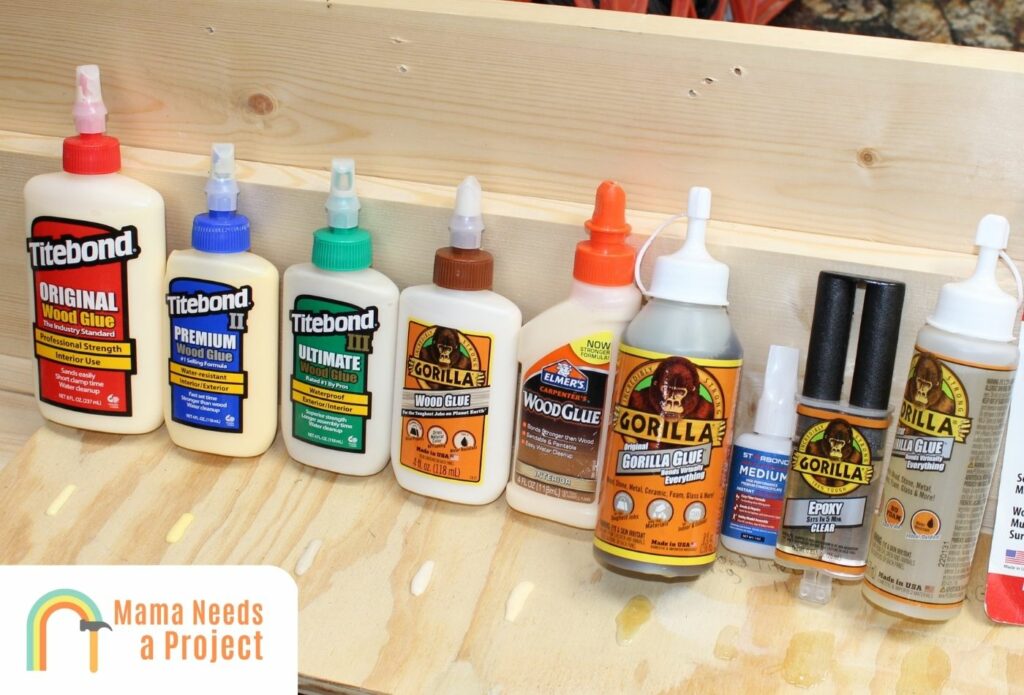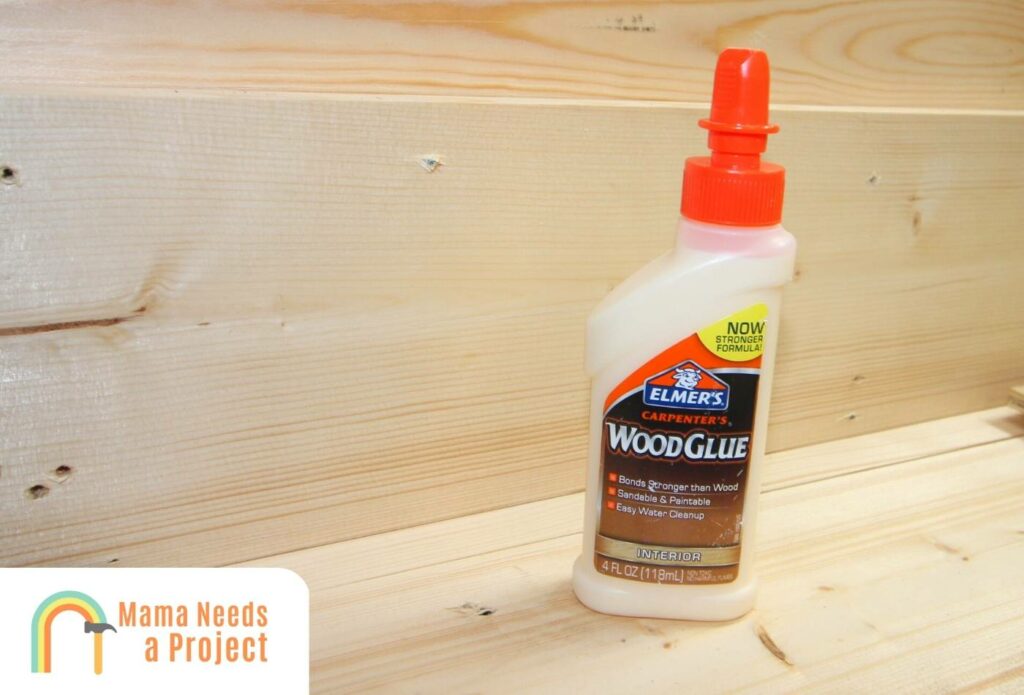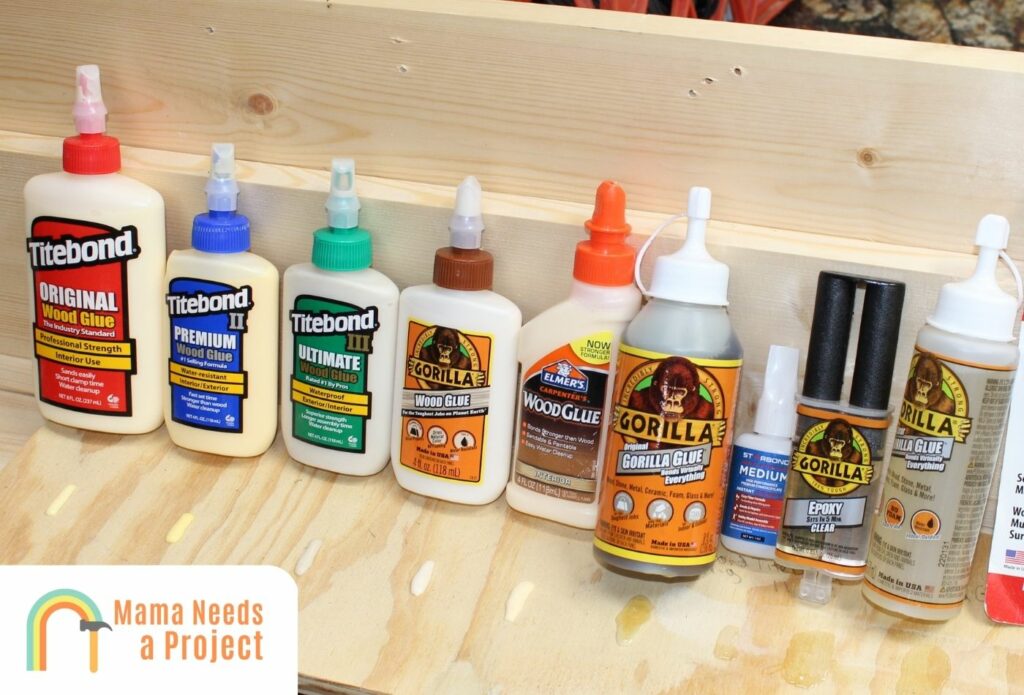When it comes to woodworking projects, choosing the right adhesive is crucial. You’ve probably heard of Elmer’s Wood Glue, a popular choice for many DIY enthusiasts. But have you ever wondered, “How long does it take for Elmer’s Wood Glue to dry?” Well, you’re in the right place! In this article, we’ll explore the drying time of Elmer’s Wood Glue and provide you with some handy tips along the way.
So, you’ve got your woodworking masterpiece all glued together, and now you’re eagerly waiting for it to dry. But patience is key, my friend! The drying time of Elmer’s Wood Glue varies depending on several factors. It typically takes anywhere from 20 minutes to 24 hours for the glue to fully dry, depending on the temperature, humidity, and the amount of glue applied.
Now, you might be thinking, “Why such a wide range of drying times?” Well, here’s the deal. In ideal conditions, Elmer’s Wood Glue can dry relatively quickly, allowing you to move on with your project sooner. However, if you’re working in a colder or more humid environment, it may take a bit longer for the glue to set. But don’t worry, we’ve got some tips to help expedite the drying process, so stick around!

How Long Does It Take for Elmer’s Wood Glue to Dry?
Woodworking and DIY projects often require the use of wood glue for strong and reliable bonds. One popular choice among many craftsmen is Elmer’s Wood Glue, known for its quality and versatility. However, for your project to succeed, it’s crucial to understand how long it takes for Elmer’s Wood Glue to dry. In this article, we will dive deep into this topic, providing you with all the information you need for successful glue-ups with Elmer’s Wood Glue.
Factors Affecting Drying Time of Elmer’s Wood Glue
Before we delve into the specific drying times, it’s important to understand the factors that can affect how long it takes for Elmer’s Wood Glue to dry. Different variables play a role in the drying process, and by taking them into consideration, you can optimize your woodworking projects for success. Here are three key factors that impact the drying time of Elmer’s Wood Glue:
1. Temperature and Humidity
Both temperature and humidity levels in your work environment can greatly influence how quickly Elmer’s Wood Glue dries. Generally, higher temperatures and lower humidity levels accelerate the drying process. If you’re working in a warm and dry space, you can expect Elmer’s Wood Glue to dry faster. On the other hand, colder temperatures and higher humidity can substantially extend the drying time. It’s essential to keep these factors in mind when planning your woodworking projects.
2. Type of Wood
The type of wood you are working with can also impact the drying time of Elmer’s Wood Glue. Different woods have varying levels of porosity, and some may absorb the glue more quickly than others. Hardwoods typically take longer to dry since they tend to be denser and have less porosity. Softwoods, on the other hand, are generally more porous and can absorb the glue faster, resulting in quicker drying times. Understanding the characteristics of the wood you’re using is crucial in determining the appropriate drying time for Elmer’s Wood Glue.
3. Glue Application
How you apply the Elmer’s Wood Glue can also affect drying time. Thicker layers of glue will naturally take longer to dry than thin, even coats. Additionally, using too much glue can hinder the drying process and lead to extended drying times. It’s important to apply an appropriate amount of glue for optimal results. Remember, the goal is to create a strong bond, not drown the wood in glue.
Approximate Drying Times for Elmer’s Wood Glue
Now that we’ve explored the factors that influence the drying time of Elmer’s Wood Glue, let’s discuss the approximate drying times you can expect when working with this adhesive. Keep in mind that these estimates can vary based on the factors mentioned earlier, so it’s always best to perform a quick test on scrap wood before applying glue to your project.
1. Initial Bonding Time
After applying Elmer’s Wood Glue and joining the two surfaces together, an initial bond will begin to form. This initial bond usually starts to set within 10-15 minutes, depending on the factors mentioned earlier. However, it is important to note that the glue will not achieve its maximum strength during this time.
2. Clamp Time
Once the initial bond has formed, it’s recommended to clamp the pieces together to create a strong and precise bond. The clamp time for Elmer’s Wood Glue can vary depending on the specific project and type of wood being used. As a general guideline, it’s recommended to leave the pieces clamped for at least 30 minutes to 1 hour. This ensures a secure bond and allows the glue to dry properly.
3. Full Drying Time
Though the initial bond is formed relatively quickly, it’s crucial to allow enough time for the Elmer’s Wood Glue to fully dry and cure. To be on the safe side, it’s recommended to wait 24 hours before subjecting the glued joint to any stress or load-bearing activities. This extended drying time ensures the glue has reached its maximum strength and provides a solid bond that will stand the test of time.
Tips for Proper Glue Application and Drying
To achieve the best results with Elmer’s Wood Glue and minimize any issues during the drying process, consider the following tips:
1. Clean and Prepare the Wood Surfaces
Before applying the glue, ensure that the wood surfaces are clean, dry, and free from any dust, debris, or previous finishes. Properly preparing the wood surfaces ensures better adhesion and a stronger bond.
2. Apply an Even Coat of Glue
Apply an even coat of Elmer’s Wood Glue to both surfaces using a brush or a glue spreader. Avoid applying too much glue, as excess glue can lead to extended drying times and potential glue squeeze-out.
3. Clamp the Pieces Together
After applying the glue, carefully align the pieces and clamp them together. The pressure from the clamps helps to create a tight bond and ensures even distribution of the glue.
4. Allow Sufficient Drying Time
Be patient and allow enough time for the glue to dry and cure fully. Rushing the process may compromise the strength of the bond and lead to project failure. Follow the recommended drying times and wait at least 24 hours before subjecting the joint to stress or load-bearing activities.
5. Clean Up Excess Glue
While Elmer’s Wood Glue is water-soluble and can be cleaned up with a damp cloth when still wet, it’s best to remove any excess glue as soon as possible. Once the glue has dried, it can be difficult to remove without sanding or scraping, which may damage the wood surface.
By following these tips and understanding the drying times for Elmer’s Wood Glue, you can ensure successful glue-ups and achieve professional-quality results in all your woodworking and DIY projects.
Using Elmer’s Wood Glue – Advantages and Tips
The Advantages of Elmer’s Wood Glue
Elmer’s Wood Glue offers several advantages that make it a popular choice among woodworkers and DIY enthusiasts:
1. Strong Bond
Elmer’s Wood Glue creates a strong bond between wood surfaces, ensuring that your projects hold together even under stress.
2. Versatility
Elmer’s Wood Glue is suitable for various woodworking applications, including edge gluing, laminating, and general woodworking projects.
3. Non-Toxic and Easy to Clean
Elmer’s Wood Glue is non-toxic and safe to use, making it an excellent choice for projects that involve children or animals. It is also easy to clean up with water while still wet.
4. Dries Clear
Elmer’s Wood Glue dries clear, allowing you to seamlessly blend the glued area with the surrounding wood for a more professional appearance.
Tips for Using Elmer’s Wood Glue
To maximize the benefits of using Elmer’s Wood Glue, here are some additional tips:
1. Use Clamps for Maximum Bonding
Always use clamps when joining wood pieces with Elmer’s Wood Glue to ensure maximum bonding strength. The pressure applied by the clamps helps create a tight and solid bond.
2. Select the Right Elmer’s Wood Glue Variant
Elmer’s offers different variants of wood glue, including the original formula and specialized formulas like their Carpenter’s Wood Glue or Max Wood Glue. Choose the variant that best suits your project’s needs.
3. Store Properly
To extend the shelf life of Elmer’s Wood Glue, store it in a cool and dry place away from direct sunlight. Proper storage helps maintain the glue’s consistency and effectiveness.
By harnessing the advantages of Elmer’s Wood Glue and following these tips, you can achieve strong and reliable bonds in your woodworking projects.
Does Elmer’s Wood Glue Expire? Shelf Life and Storage Tips
Shelf Life of Elmer’s Wood Glue
Elmer’s Wood Glue has a relatively long shelf life when stored properly. The typical shelf life of Elmer’s Wood Glue is around two years from the date of manufacture. However, depending on storage conditions, such as temperature and humidity, the glue may last even longer. It’s worth noting that the drying time of the glue may be affected as it gets older, so it’s important to take this into account when working with older bottles.
Storage Tips for Elmer’s Wood Glue
To maximize the shelf life and effectiveness of Elmer’s Wood Glue, consider the following storage tips:
1. Keep in a Dry and Cool Place
Store Elmer’s Wood Glue in an area where the temperature remains relatively stable and cool, ideally between 50°F (10°C) and 70°F (21°C). Avoid storing it in hot or humid environments, as this can degrade the glue’s quality.
2. Properly Seal the Bottle
Ensure the bottle is tightly sealed after each use. Exposure to air can cause the glue to thicken or dry out, reducing its effectiveness over time. Properly sealing the bottle preserves the glue’s consistency and extends its shelf life.
3. Avoid Freezing
Elmer’s Wood Glue should never be exposed to freezing temperatures. Freezing can cause irreversible damage to the glue, rendering it unusable.
4. Prevent Contamination
To prevent contamination of the glue, avoid touching the glue bottle’s tip to wood surfaces or other materials. Contamination can introduce foreign particles into the glue, affecting its quality and bonding strength.
In Summary
Understanding how long it takes for Elmer’s Wood Glue to dry is crucial for successful woodworking projects. Factors such as temperature, humidity, the type of wood being used, and proper glue application all play a role in the drying time. It’s important to allow sufficient drying and curing time before subjecting the glued joint to stress or load-bearing activities. By following the recommended drying times, applying the glue correctly, and considering storage and shelf life tips, you can achieve strong and reliable bonds with Elmer’s Wood Glue. Remember, patience and attention to detail are key in woodworking projects, and proper glue usage is no exception. So, take your time, follow the guidelines, and let Elmer’s Wood Glue work its magic in helping you create beautiful and long-lasting creations.
How Long Does It Take for Elmer’s Wood Glue to Dry?
- Elmer’s wood glue typically dries to the touch within 20 to 30 minutes.
- However, it’s important to note that the complete drying time can vary depending on factors such as temperature and humidity.
- In ideal conditions, Elmer’s wood glue may fully dry and cure within 24 hours.
- To ensure maximum bond strength, it is recommended to wait at least 24 hours before applying any stress or load to the glued wood.
- Always refer to the instructions on the product packaging for specific drying times and recommendations.
Frequently Asked Questions
Woodworking projects often require the use of wood glue, like Elmer’s Wood Glue, to bond pieces together. If you’re wondering how long it takes for Elmer’s Wood Glue to dry, we’ve got you covered! Here are the answers to some frequently asked questions related to the drying time of Elmer’s Wood Glue:
How long does it take for Elmer’s Wood Glue to dry?
The drying time of Elmer’s Wood Glue varies depending on several factors, including humidity, temperature, and the thickness of the glue layer. Generally, it takes about 24 hours for Elmer’s Wood Glue to dry completely. However, it’s important to note that the glue may start to set in as little as 20-30 minutes. While it may appear dry on the surface, it is best to allow a full day for the glue to cure before subjecting the bonded pieces to any stress or pressure.
Keep in mind that colder temperatures and high humidity can prolong the drying time, so it’s always a good idea to check the manufacturer’s instructions for specific drying recommendations. Additionally, applying a thin even layer of glue and ensuring proper clamping or pressure during the drying process can help expedite the drying time.
Can I speed up the drying time of Elmer’s Wood Glue?
Yes, there are a few techniques you can try to speed up the drying time of Elmer’s Wood Glue. Firstly, you can increase the air circulation by using a fan or opening windows in the workspace. This helps to reduce the moisture in the surrounding air and encourages faster drying. Additionally, placing a heat source, such as a lamp or a heat gun, near the glued area can also accelerate the drying process.
However, it’s important to exercise caution when using heat sources, as excessive heat can cause the glue to dry too quickly and compromise the bond. It is always recommended to carefully follow the instructions provided by the manufacturer and use the appropriate techniques to ensure a secure and long-lasting bond.
What should I do if the Elmer’s Wood Glue is not drying?
If you’re experiencing issues with Elmer’s Wood Glue not drying properly, there could be a few reasons behind it. Firstly, check the humidity levels in your workspace. High humidity can significantly slow down the drying process. Consider using a dehumidifier or moving the project to a drier area to help expedite the drying time.
Another potential reason for the glue not drying could be an incorrect ratio of glue to water. Make sure you follow the manufacturer’s instructions and mix the glue and water in the recommended proportions. Lastly, ensure that the glue layer is thin and evenly applied. Applying a thick layer of glue can impede the drying process. If all else fails, it may be necessary to remove the glue and reapply it using fresh glue to achieve the desired bond.
Can I paint over dried Elmer’s Wood Glue?
Yes, Elmer’s Wood Glue is paintable once it has completely dried. After the glue has cured for the recommended time, typically 24 hours, you can paint over it with your chosen paint. Before painting, ensure that the glue surface is clean and free from any dust or debris. Sanding the surface lightly can help create a smoother finish. It’s also important to note that some types of wood glue may dry with a slightly yellowish tint, so you may need to choose a paint color that works well with this tint, if it is a concern for your project.
Additionally, if you plan on staining the wood, it’s a good idea to test a small, inconspicuous area first to ensure the glue doesn’t interfere with the staining process. Each project is unique, so be sure to read the instructions on the paint or stain product you are using for specific guidance on applying it over glue.
Is Elmer’s Wood Glue waterproof?
Elmer’s Wood Glue is not specifically formulated to be waterproof. While it does offer some degree of water resistance, it is not recommended for use in applications where the glued surfaces will be exposed to prolonged or direct water contact. If your project requires waterproofing, consider using a specialized waterproof or weatherproof glue that is specifically designed for that purpose.
For outdoor woodworking projects that are exposed to the elements, it is advisable to protect the glued joints with a weatherproof finish or sealant, such as polyurethane or an outdoor-rated varnish, to provide additional protection against water damage. Always follow the manufacturer’s recommendations for keeping the glued surfaces well-maintained and protected from moisture to ensure the longevity of your project.

Summary
Elmer’s wood glue takes about 24 hours to fully dry and cure. However, it is best to let it sit overnight to ensure a strong bond.
During the drying process, it is important to keep the glued objects in place and avoid any movement or pressure. Once dry, the glue creates a strong, durable bond that can withstand everyday use.
Remember to follow the instructions on the bottle and apply the glue evenly for best results. Happy crafting!
